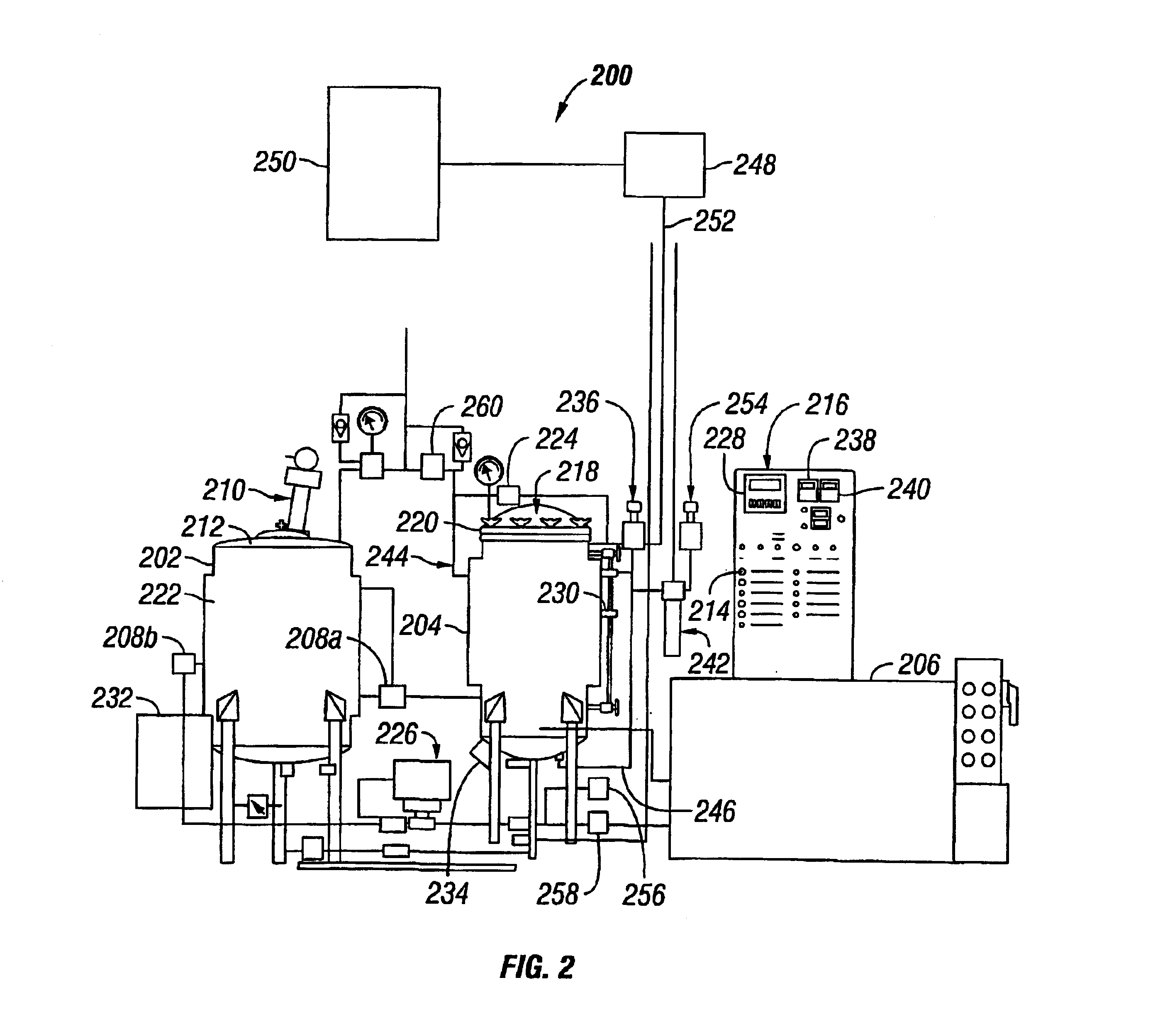Semi-automatic coating system apparatus
a coating system and semi-automatic technology, applied in the direction of prosthesis, food packaging, cleaning using liquids, etc., can solve the problems of only being able to perform laboratory tests, post-operative infection control even more difficult, and unsuitable disinfectants for use on living tissues, etc., to prolong the pot life of the coating solution, minimize user intervention, and minimize thermal exposure
- Summary
- Abstract
- Description
- Claims
- Application Information
AI Technical Summary
Benefits of technology
Problems solved by technology
Method used
Image
Examples
example 1
Preparation of an Antimicrobial Coating Solution
[0081]Transfer 9.06 liters of acetone-free absolute methyl alcohol (catalogue number M 1775, Sigma Chemicals, St. Louis, Mo. USA) into the holding vessel of the present invention and engage the holding vessel mixer. Slowly add 681.3 grams of USP grade Rifampin (Lupin Laboratories, LTD, Mumbai, India) to the methanol. Next, add 568 grams of USP grade Minocycline (Companhia Industrial Produtora de Antibioticos, S. A., Castanheira Do Ribatejo, Portugal) to the Rifampin / methyl alcohol mixture. After all of the Rifampin and Minocycline have disolved, slowly added 13.63 liters of ACS reagent grade n-butyl acetate (catalogue numner B 6408 Sigma Chemicals, St. Louis, Mo. USA). Immediately cover the holding vessel and secure.
example 2
Exemplary Coating Procedure Including Microprocessor / Contoller Input / Output Sequence
Process Step 0:
Coating System Status: Stand-by condition, process vessel loaded, closed and latched. Vessel temperature 35° C.
Input2 Status:
[0082]1. Solvent Temperature Alarm off signal from temperature controller. I-3
[0083]2. Process Vessel cover closed sensor signal. II-3
[0084]3. Process Vessel cover latched sensor signal. II-4
[0085]2 See Table 2.
Output3 Status:
[0086]1. Treatment Timer reset signal. II-2
[0087]3 See Table 3.
Process Step 1
Coating System Status: Initiate process cycle, pumping solution to process vessel.
Input Status:
[0088]1. Initiate Cycle push button signal (momentary). I-0
[0089]2. Solvent Temperature Alarm off signal from temperature controller. I-3
[0090]3. Process Vessel cover closed sensor signal. II-3
[0091]4. Process Vessel cover latched sensor signal. II-4
Output Status:
[0092]1. Solvent Pump On. I-0
[0093]2. Pump direction signal out, (pump to process vessel from holding vessel)...
PUM
| Property | Measurement | Unit |
|---|---|---|
| Temperature | aaaaa | aaaaa |
| Responsivity | aaaaa | aaaaa |
| Exposure limit | aaaaa | aaaaa |
Abstract
Description
Claims
Application Information
 Login to View More
Login to View More - R&D
- Intellectual Property
- Life Sciences
- Materials
- Tech Scout
- Unparalleled Data Quality
- Higher Quality Content
- 60% Fewer Hallucinations
Browse by: Latest US Patents, China's latest patents, Technical Efficacy Thesaurus, Application Domain, Technology Topic, Popular Technical Reports.
© 2025 PatSnap. All rights reserved.Legal|Privacy policy|Modern Slavery Act Transparency Statement|Sitemap|About US| Contact US: help@patsnap.com



